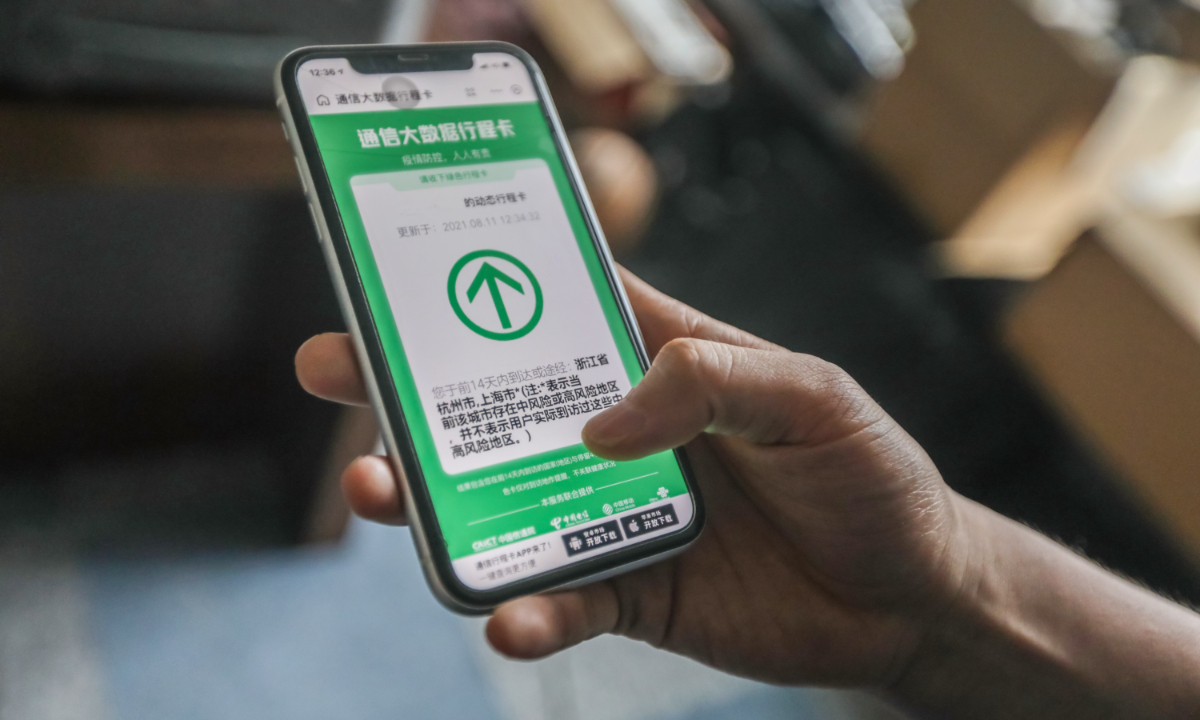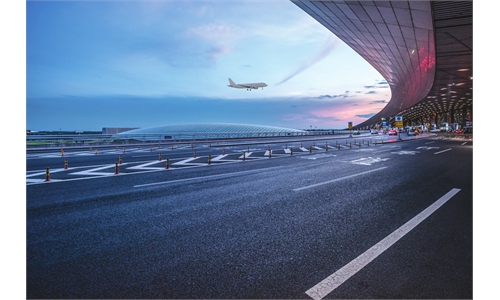China removes COVID infection risk marks in constant exploration for ‘better balance of epidemic prevention, devt’

travel-code Photo: CFP
China on Wednesday announced the nationwide travel tracking system will no longer mark cities having areas of COVID-19 infection risks to better balance epidemic prevention and economic and social development, the latest move which signaled China's continuous exploration to realize more scientific and precise epidemic prevention and control under the dynamic zero principle. The policy was announced after Tuesday's adjustment that halved collective quarantine for international arrivals and close contacts to seven days, plus three days of home health monitoring.It also came after Chinese President Xi Jinping stressed during his inspection in Central China's Wuhan on Tuesday that China has the capability and strength to implement the dynamic zero-COVID policy until the final victory is secured and China's COVID-19 response measures are the most economical and effective.
During his inspection of Wuhan on Tuesday, Xi noted China's dynamic zero-COVID policy was formulated by the CPC Central Committee based on the Party's nature and purpose, as well as the country's national conditions.
If China had adopted the "herd immunity" policy or a hands-off approach, given its large population, the country would have faced catastrophic consequences, Xi said.
"Even if there are some temporary impacts on the economy, we will not put people's lives and health in harm's way, and we must protect the elderly and the children in particular," Xi said.
"If we make an overall evaluation, our COVID-19 response measures are the most economical and effective."
Before Wednesday, cities with an area of high or medium COVID infection risks were marked with an asterisk in the travel history checking system under the State Council's administration. Inter-city and inter-provincial travelers were usually asked to present tracking information upon arrival.
The risk area is designated in the unit of communities while the asterisk was measured in unit of cities and municipalities — meaning a city of a few million residents will be marked the same way as mega cities like Shanghai and Beijing if both have one community with COVID-19 infections.
In practice, having an asterisk or not has been used by some places to up restrictions on travelers. A Beijing resident told the Global Times she had to give up a trip to a scenic spot in South China because Beijing was marked and she was required collective quarantine, even though the capital city of 20 million residents then had one medium-risk area and a few infections.
Residents in Beijing, Shanghai and Nanjing, whose travel history bears an asterisk, shared their excitement on social media over the latest news while online searches for air and train tickets spiked.
The searches for air tickets on the platform grew by 60 percent in less than 30 minutes on travel portal qunar.com after the latest announcement. The searches for hotel rooms doubled, while searches for train tickets increased by 150 percent, the platform said.
A senior expert from the Chinese Center for Disease Control and Prevention (CDC) interpreted the "cancelation of asterisk marking" as a timely and wise step in China's overall control of the epidemic and can prevent some places from putting extra restrictions on travelers from low-risk areas citing their origin cities' "asterisk" status as an excuse.
Lu Hongzhou, head of Shenzhen's anti-epidemic expert team and head of the Third People's Hospital of Shenzhen, told the Global Times on Wednesday nucleic acid testing can be taken as a pass card for people to travel no matter where they are from.
China on Tuesday tweaked its COVID playbook, drawing a clear standard on what constitutes medium- and high-risk areas and what management people involved are subject to, and asking cities to arrange the frequency and scope of nucleic acid testing based on infection risks and transmission chains.
In early June, the National Health Commission (NHC) urged local governments to avoid upping the ante of COVID-19 control, such as refusing to allow arrivals from low-risk areas.
The expert told the Global Times that China has built up an effective system of normalized epidemic control. When people in areas of infection risks are managed in line with the relevant playbook, people outside controls should be able to move freely.
If in some circumstances someone from a low-risk region is tested positive during a trip, the person can be quickly identified and relevant COVID-19 control measures will be imposed, the CDC expert said. "It should be prevented to impose escalated controls on all to tackle very few exceptions."
The Ministry of Industry and Information Technology, which announced the new policy, stated the policy aims to "support an efficient coordination of epidemic prevention and control and economic and social development, and facilitate the travel of users" while implementing the general principle of "dynamic zero-COVID," according to the ministry's website.
Observers stressed the cancelation of travel history marking is not abandoning "dynamic-zero" but rather underscores the "dynamic" part of the control strategy.
Under the principle, China has always been exploring an epidemic control package that suits the time and needs, retaining effective methods and discarding outdated ones, the CDC expert said.




